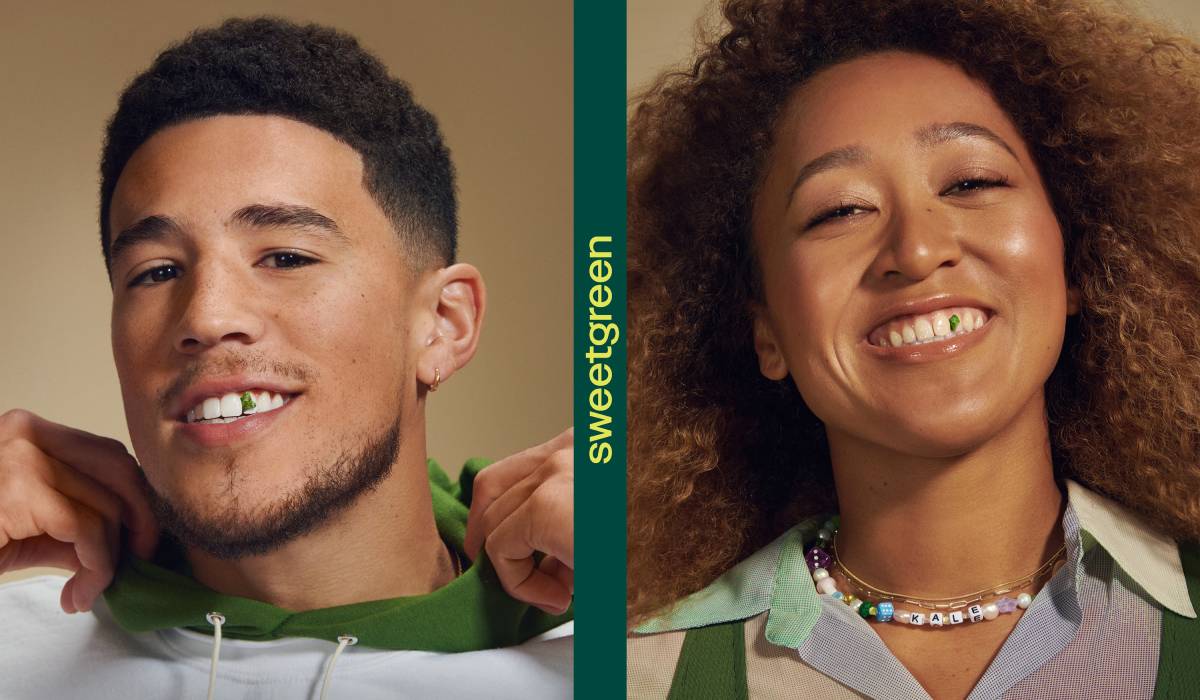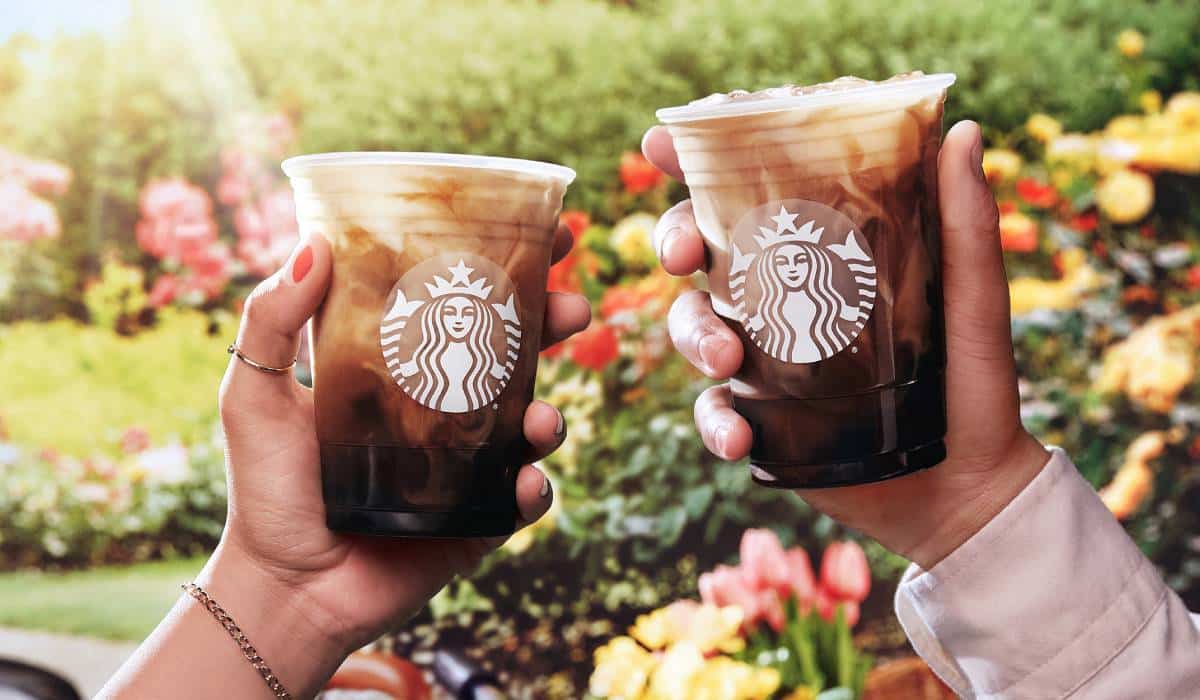Starbucks’ freshly minted CEO Laxman Narasimhan arrived in March. Officially. He had spent the previous five months immersing himself in the company’s business, from manufacturing to earning his barista certification. And two lead thoughts emerged.
One was rooted in Starbucks’ origin—a core positioning that grayed a bit in recent years thanks to COVID-19. This notion, Narasimhan said, “that Starbucks is uniquely in the business of human connection.”
“Since our earliest days, we have been a brand that brings people together from the vantage points of serving customers in stores and in drive-thru windows,” he said. “Many are coming to us for connection with others. There is no doubt Starbucks has conventionally been the mainstay meet-up spot.”
But perhaps where Starbucks needs to redefine its “third-place” goes beyond a gathering hub. Narasimhan said nearly two-thirds of U.S. consumers today are solo when seeking a food or beverage occasion. “As a world in a crisis of disconnection, where loneliness, division, and polarization have become far too common, the everyday ritual of coffee is a powerful way to make connection happy with others, and with yourself,” he said.
“Starbucks delivers connection no matter how you visit us, in stores, drive-thrus, or digitally—we are there to provide this connection, any place, any time,” Narasimhan continued.
READ MORE: Starbucks and the Coffee Sector are Buzzing
As holistic as this all sounds, it brought Narasimhan to his second observation. In recent years, Starbucks navigated the pandemic only to arrive at a pulsing challenge—where demand for the brand (thanks largely to digital growth) proved greater than its capacity to fulfill it. The end result was elevated turnover on the crew level, supply instability, and simply, cracks in operations that left a lot on the table. “Our performance is strong, but our health could be stronger,” Narasimhan said.
There’s work to be done to tailor stores to evolving demand. Tech advances, equipment innovations. And, more fundamentally, how Starbucks gets back to better execution. “A priority that is evident with my deep engagement over the last several months across supply chain, technology, reinvention [Starbucks’ ongoing initiative to address all of these fronts], store development, store operations, marketing, and product,” Narasimhan told investors in his first earnings call as chief executive.
How Narasimhan will examine the task is something he refers to as a business with “theaters at the front, with a factory in the back.” Or “theaters” where employees focus on making coffee and delivering experience, and “factories” in the back that aid productivity and streamline processes to free up workers to do just that.
Narasimhan offered a case. Currently, Starbucks’ store deliveries involve a high-touch, one-size-fits-all model. “We are out of stock in more items than we would like,” he said.
Through segmentation and a format-specific approach (say a drive-thru is handled differently than an urban storefront), Narasimhan believes Starbucks can lower costs and create a better environment for employees, and, ultimately, guests.
Additionally, there are “abundant opportunities” for the brand to optimize what it purchases across several areas as well as opportunities in how it buys, he added.
For instance, Starbucks has more than 1,500 cup-and-lid combinations today across its network. “As we streamline, we will create a portfolio of fewer, more sustainable and less costly cups while further simplifying operations in our stores,” Narasimhan said.
There’s also Starbucks’ “Siren System,” which it showcased at investor day. The evolving platform works toward making employees’ lives easier when it comes to drink creation itself. Things like a custom ice dispenser, faster blenders, and a milk-dispensing system. Arguably, the blockbuster is Starbucks’ Clover Vertica system, which can serve a cup of coffee on demand in less than 30 seconds. Each machine is topped by six hoppers and brewers don’t require paper filters.
Previously, every 30 minutes, employees would need to grind coffee beans, batch it in paper filters, and brew. They threw away anything unsold each half hour—a cycle of grind, batch, dump, do over.
Clover Vertica brewers began to roll out in Q2 and will be in nearly 50 percent of company-operated U.S. locations by the end of the fiscal calendar.
Another pillar is Starbucks’ new Cold Pressed Technology, developed at its Tryer Center. The patented method extracts coffee with low-pressure immersion, without heating water. Four steps, a matter of seconds, and cold brew delivered as a guest requests it. This historically was a 20-step, 20-hour process where Starbucks spends some $50 million per year on labor just to make cold brew coffee.
In another example, the Siren System, across early tests, reduced the process for making a Grande Pink Drink from 52 seconds and 11 steps to just over 24 seconds and nine steps.
Concerning food, breakfast sandwiches were taking 65–80 seconds to individually warm in ovens. Starbucks’ Siren system batch cooks instead and places them in a heated rack, or warming wall, next to the drive-thru window.

On that demand topic …
Starbucks’ U.S. momentum in Q2 accelerated to 12 percent same-store sales growth, a number that lapped Omicron-related disruptions last year. Consolidated revenues hit $8.7 billion. Starbucks’ domestic comp split 6 percent transaction and ticket growth, respectively. But notably, CFO Rachel Ruggeri said, store traffic has now surpassed pre-pandemic levels in the brand’s busiest dayparts (morning). “We’re able to unlock capacity and better serve our customers,” she said, referencing the reinvention plan, “and we’re seeing that come to fruition in terms of our overall strength in [transactions per store day], which is also increasing in the early part of our afternoon.”
Starbucks’ 90-day active rewards membership tacked on 400,000-plus members this past quarter in just the U.S. That brought the total to 30.8 million. Starbucks increased membership by 4 million, year-over-year, or 15 percent growth. Members accounted for 57 percent of company-operated revenue in Q2—a record figure, and 3 percent higher on an annual basis. “We have been a vanguard in this area,” Narasimhan said. “And you can expect us to further invest and lead.”
A major element at work is the continued proliferation of “Starbucks Connect,” which allows licensed stores to offer mobile order and pay and rewards benefits. Before, customers couldn’t use their Starbucks profiles in these spots (of which there were 6,608 at year-end 2022) like they could in corporate stores (there were 9,265 of those headed into 2023).
Narasimhan said Starbucks Connect is now in more than a third of its U.S. licensed venues, so about 2,200, and is “giving our customers even more opportunities to engage with our brand.” Equally vital, it’s enabling Starbucks to grow its digital relationship with guests in thousands of additional stores.
Narasimhan also offered an update on Starbucks’ Oleato platform. Inspired by founder Howard Schultz’s trips through Italy over the years, Oleato infuses coffee drinks with Partanna extra virgin olive oil, creating an “unexpected, velvety, buttery flavor that enhanced the coffee and lingers beautifully on the palate,” he said.
Per Narasimhan, Starbucks has already reached an audience of 5 billion people since the February launch, making it one of the top five product intros in the last five years in terms of brand awareness. It’s currently live in 650 stores across Italy, Japan, and the U.S.
“Scaled profitable innovation,” in general, will be one of Narasimhan’s top focus areas as CEO. He credited Q2’s performance to three cross-sections: beverage launches like Pistachio Cream Cold Brew, which then inspired expanded use of food (record sales of egg bites and breakfast sandwiches last quarter), and three, Starbucks’ continued efforts to tap into convenience.
Mobile order and pay, drive-thru, and delivery accounted for 74 percent of Q2 company-owned revenue. That was 72 percent in Q1.
As all of this unfolds, going back to the Siren umbrella, Starbucks has plenty of tasks on deck in regard to employee development. Barista turnover reduced by more than 9 percent in Q2 from a high in March of last year, Narasimhan said. The brand was able to increase the average hours per barista, per week, by 4 percent year-over-year—“a metric we know is one of the many meaningful inputs in achieved the desired compensation of our partners,” he said.
In addition to the streamlined work flow and higher pay, scheduling presents a “real opportunity” for Starbucks, Narasimhan said.
Frank Britt, EVP and chief reinvention officer, who was brought on in April from workforce development firm Penn Foster, called the current labor market “acute.”
“We have continued, however, to build on Laxman’s points to distinguish yourself as a preferred employer of choice for frontline workforces,” he said. “And we view that through the lens of how do we create value for the partner as we continue to partner and building the company together?”
Specifically with scheduling, Starbucks wants to become better at contouring hours by store and daypart and, to Narasimhan’s point, get employees what they need relative to the shifts they’d like to pickup week-to-week. Narasimhan added the brand noticed a strong pickup in the program of tipping that was recently introduced.
Items per labor hour, a metric that clocked a record high in December 2022, appreciated strong pace into and throughout Q2 despite seasonal trends. That, as much as anything, reflects increased productivity amid strong volumes, Narasimhan said (the top-tier issue on Starbucks’ plate last year).
Employee engagement and customer connection scores stabilized in Q2. Starbucks rolled handheld cold foam blends to support demand for customization and expects to cover the system by the end of Q3, “just in time to support our summer demand,” Narasimhan said.







